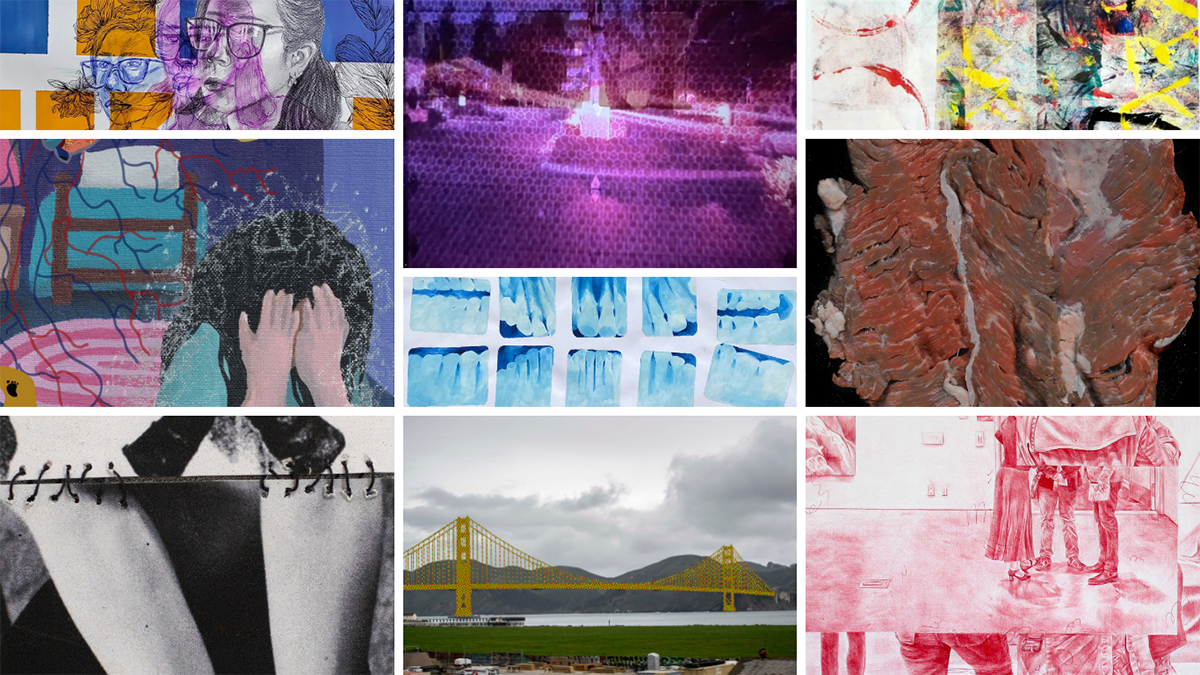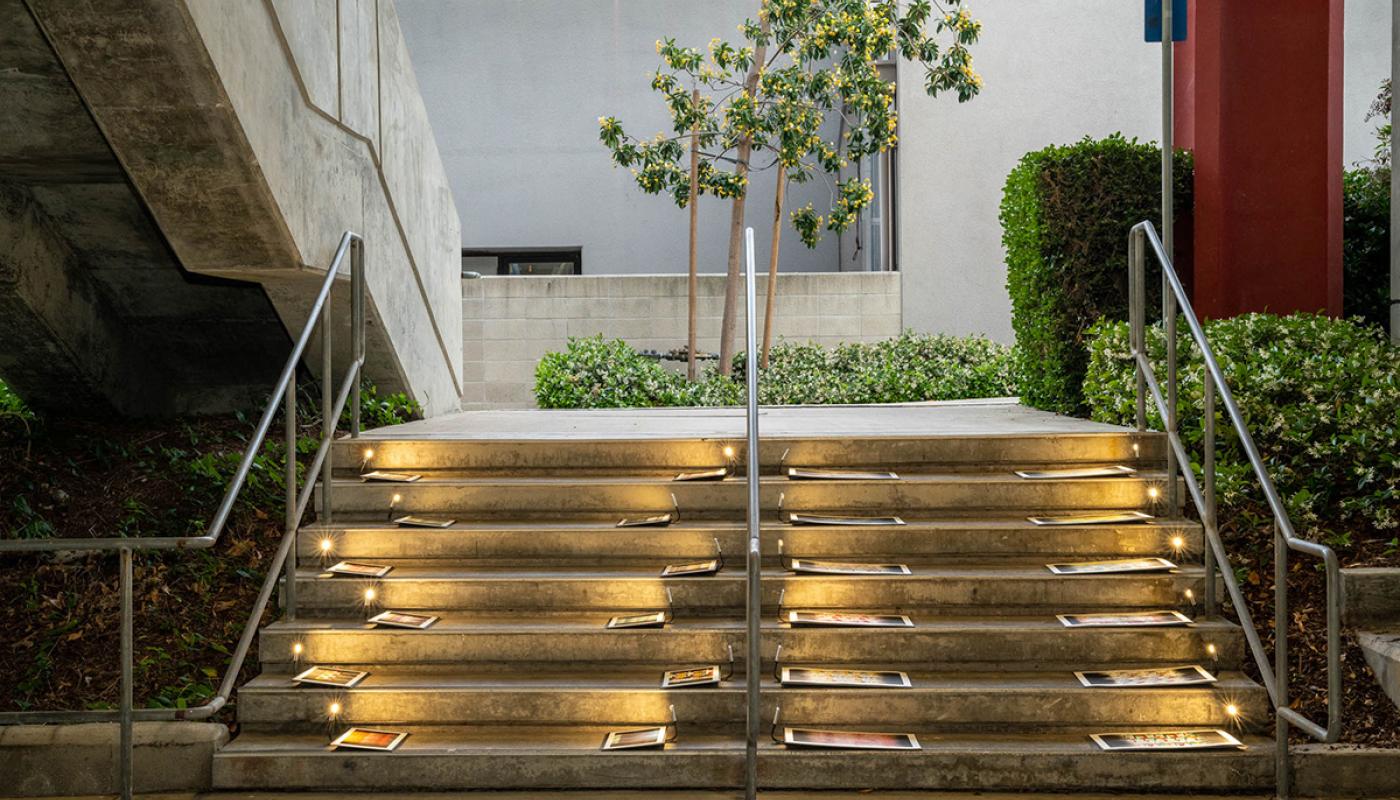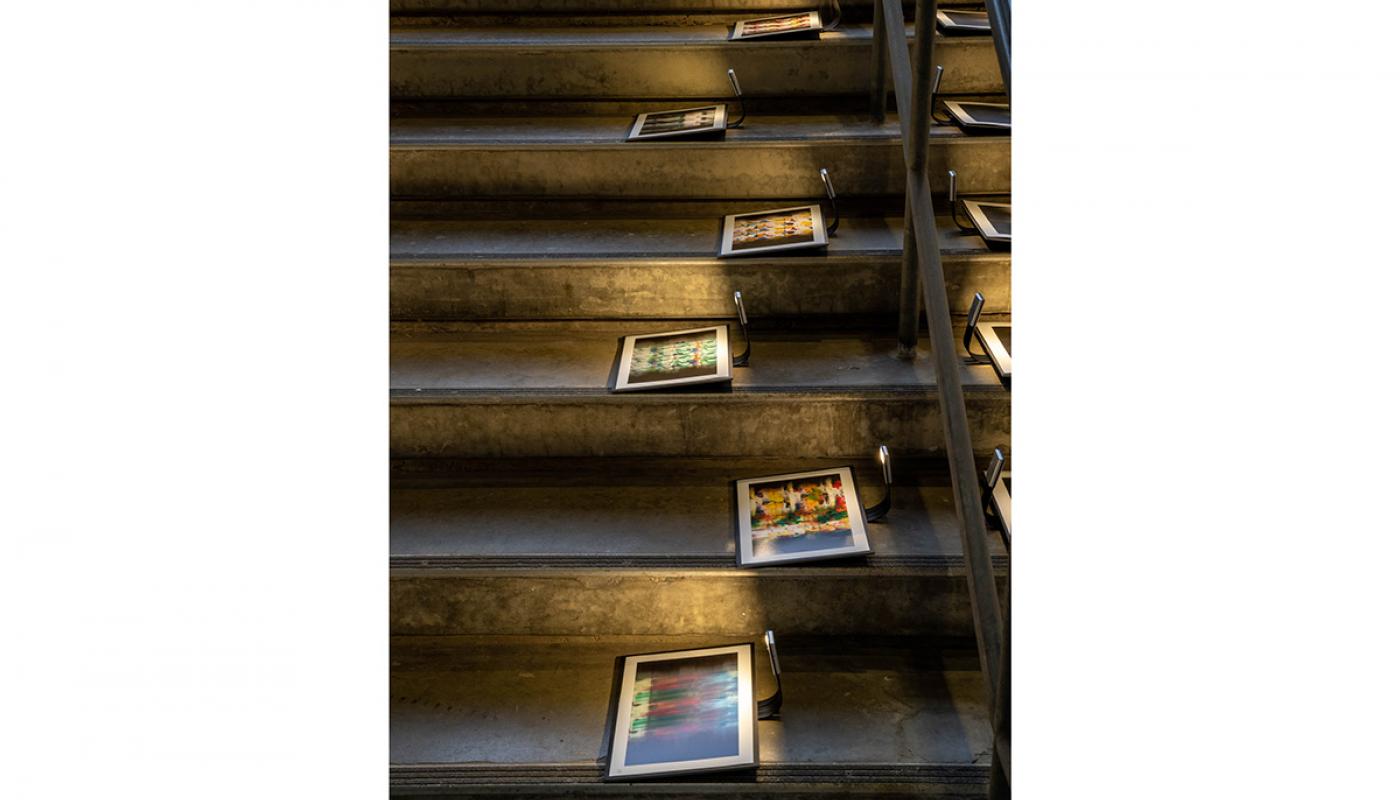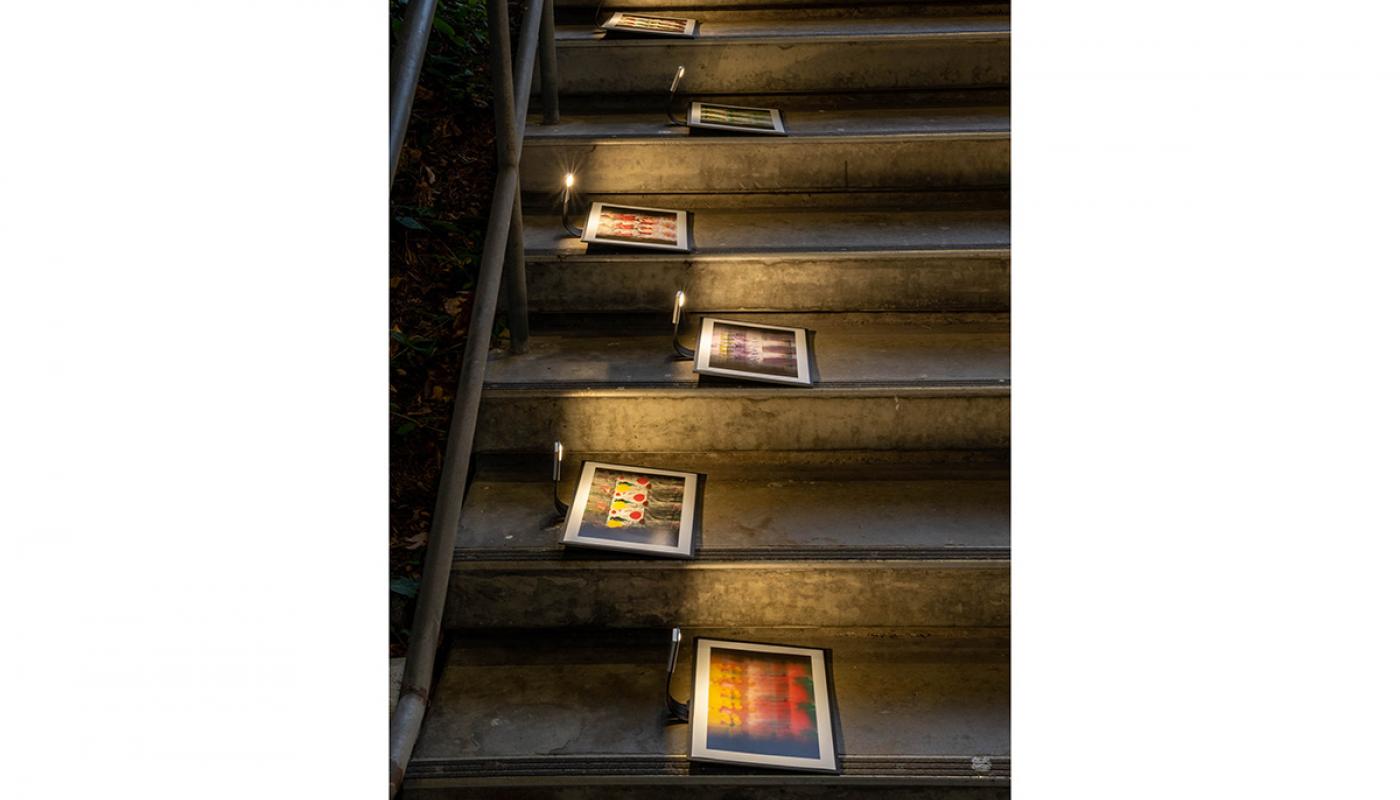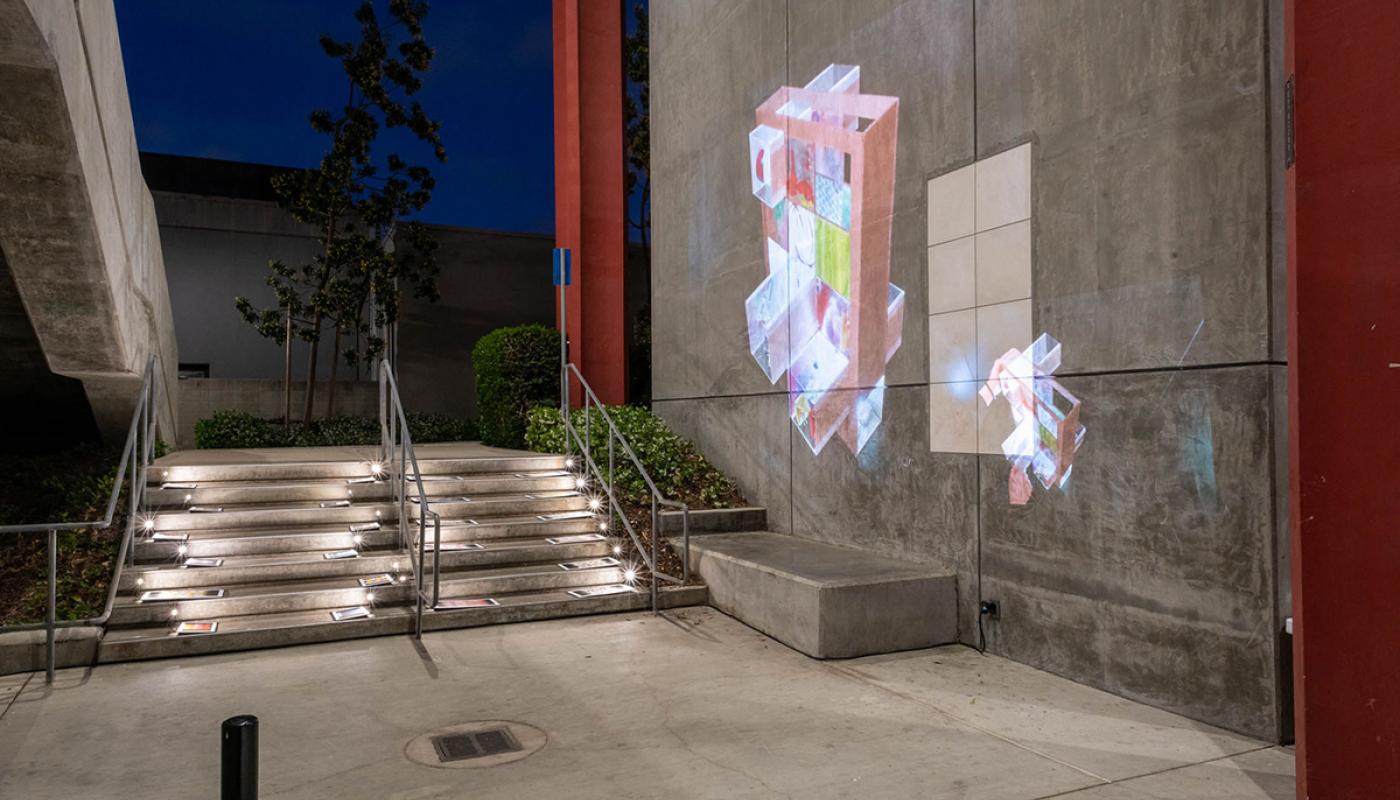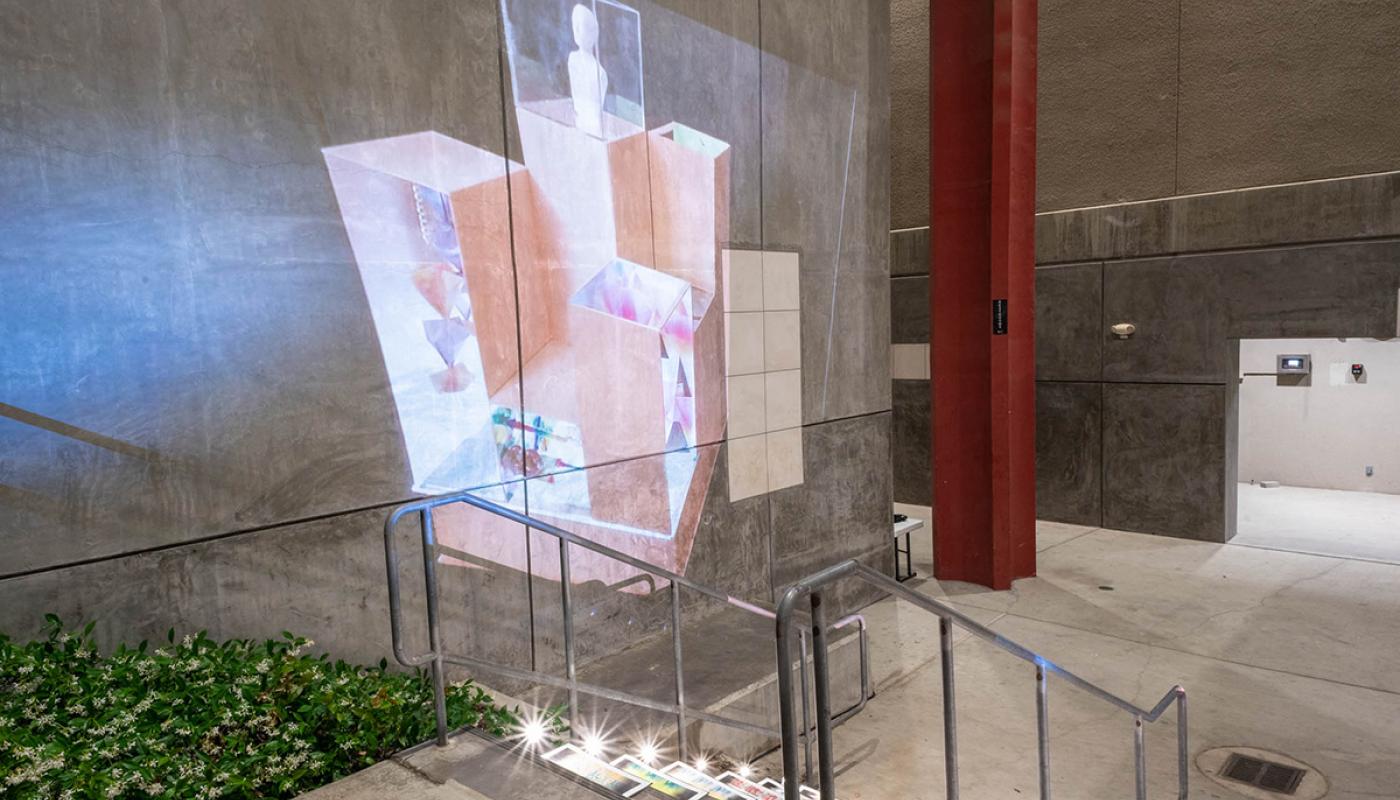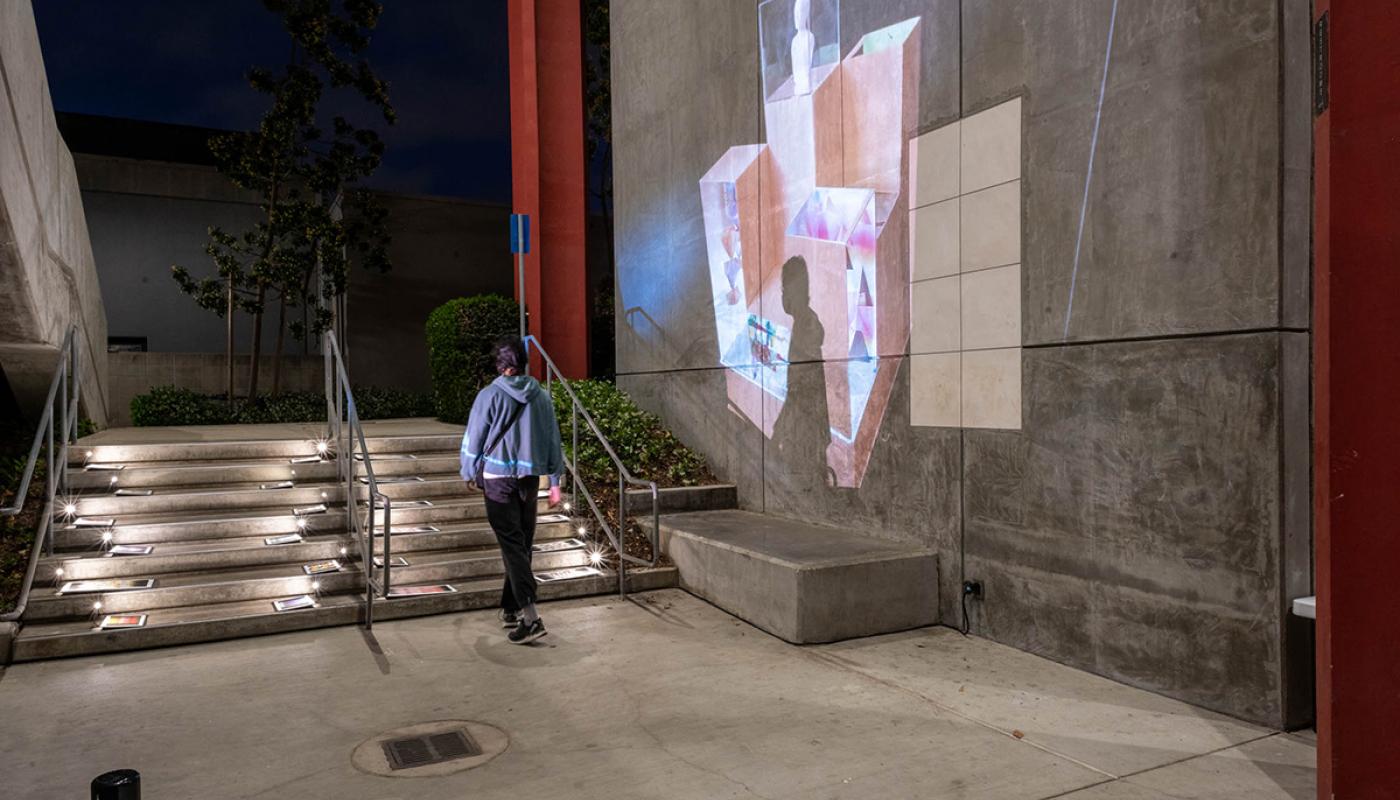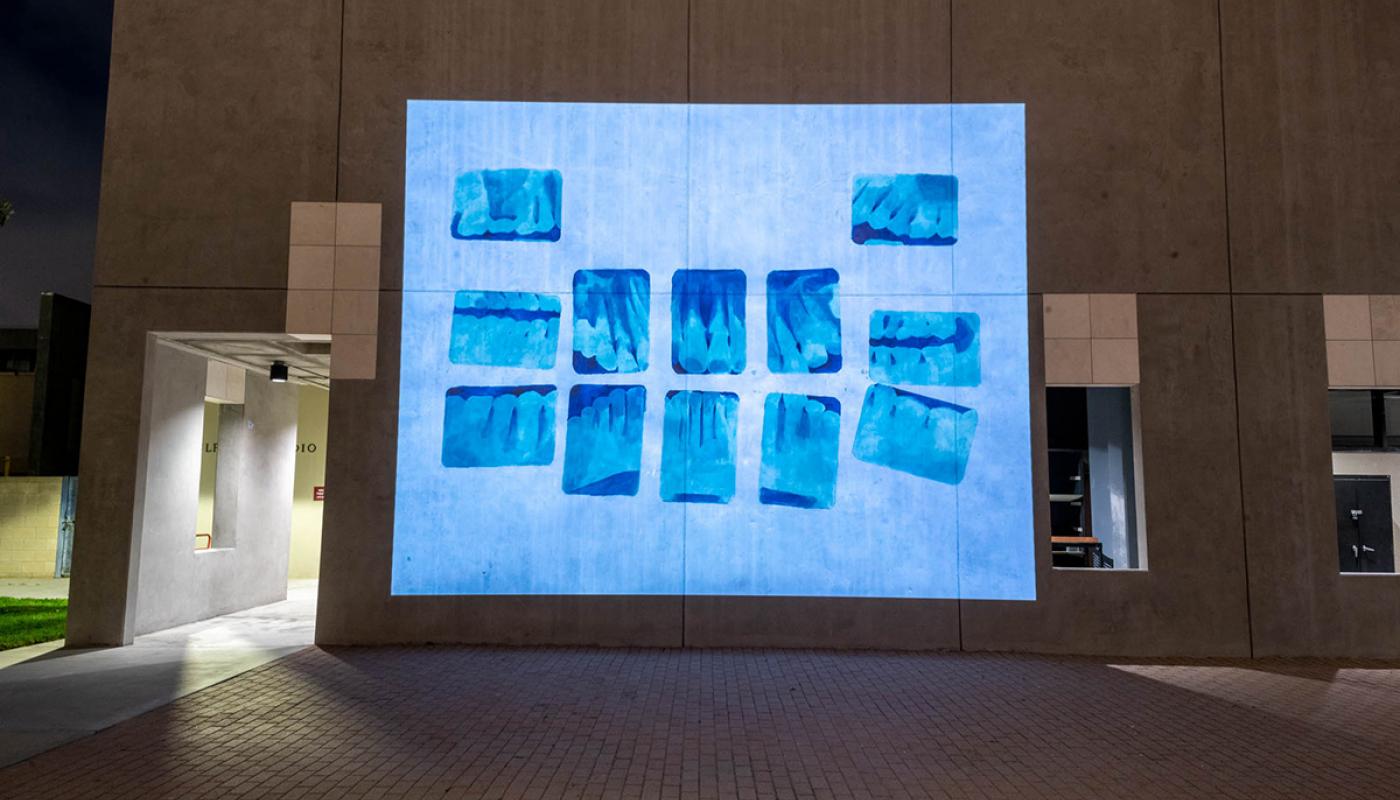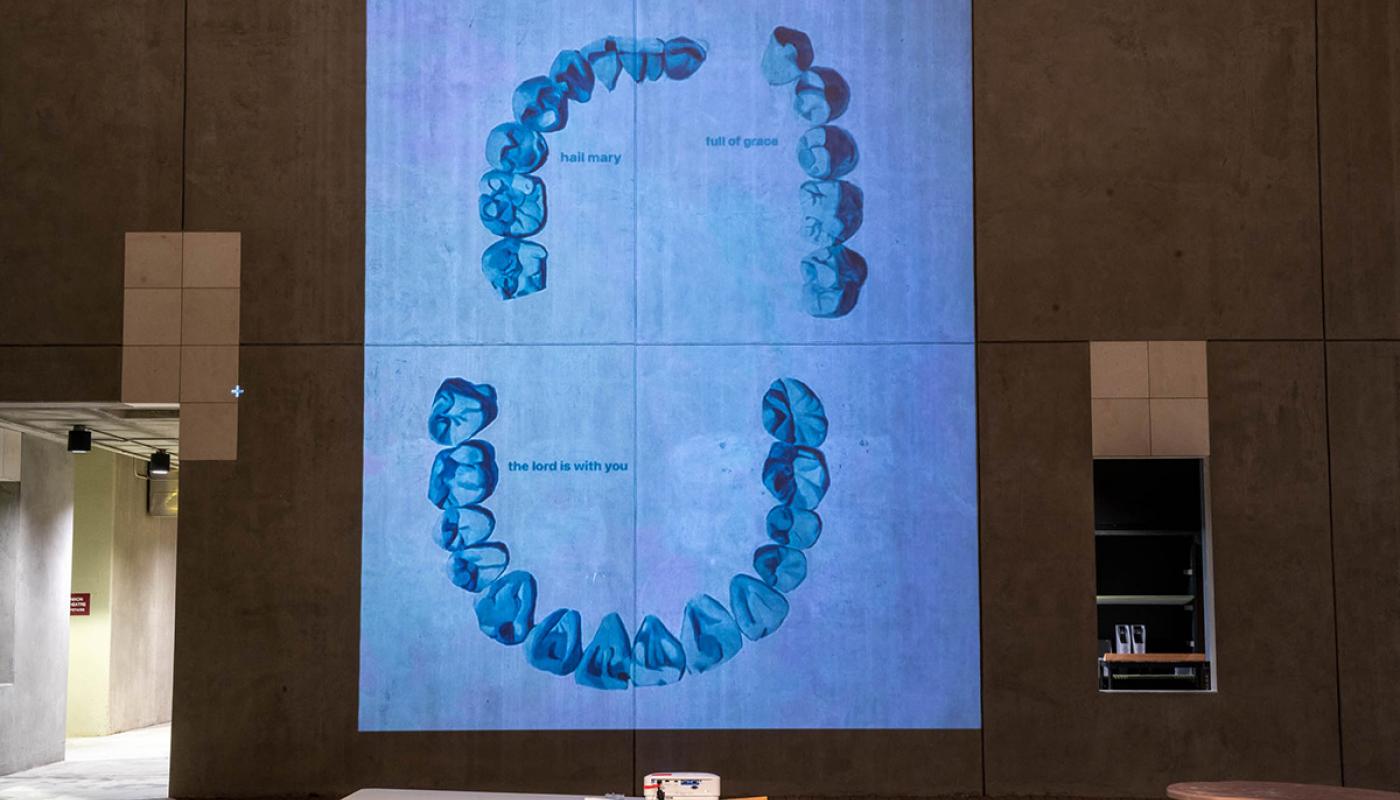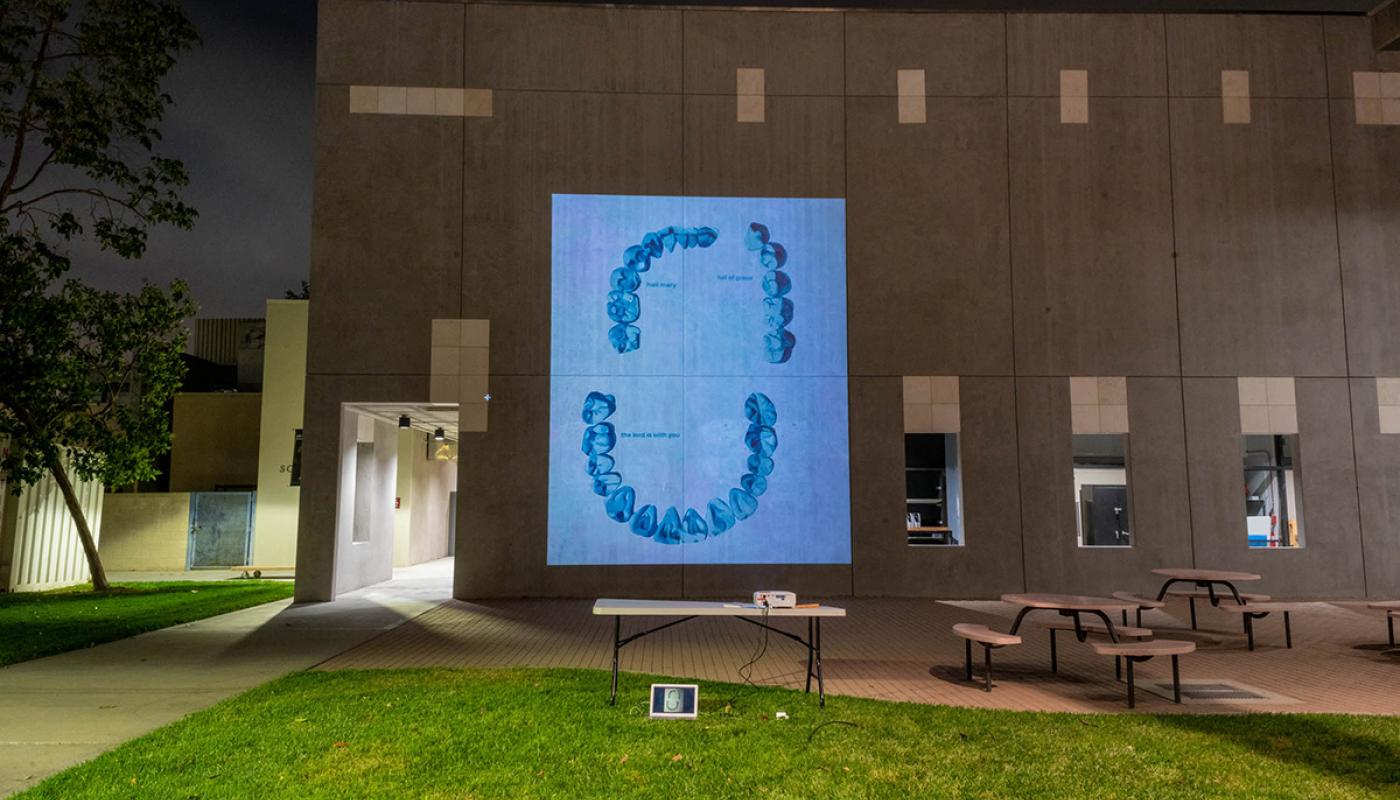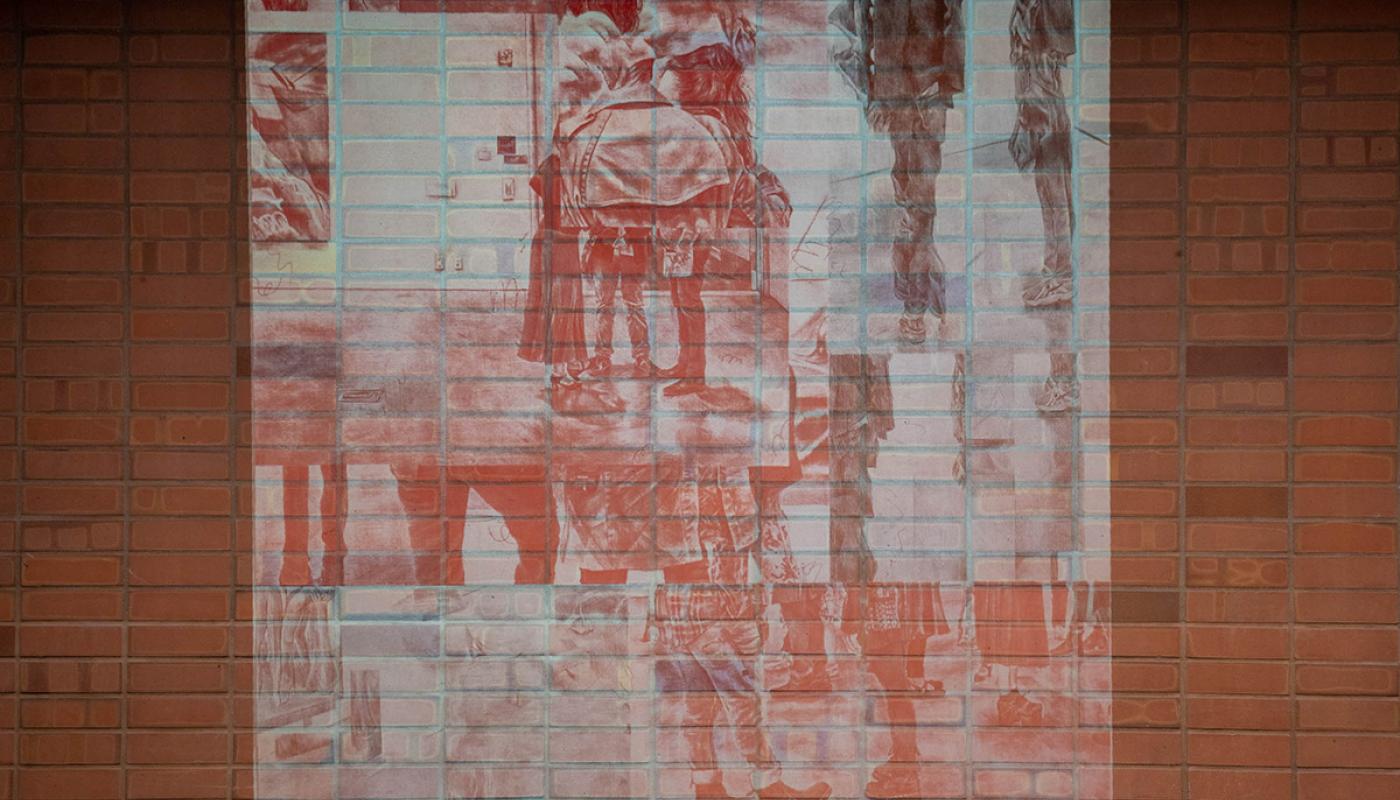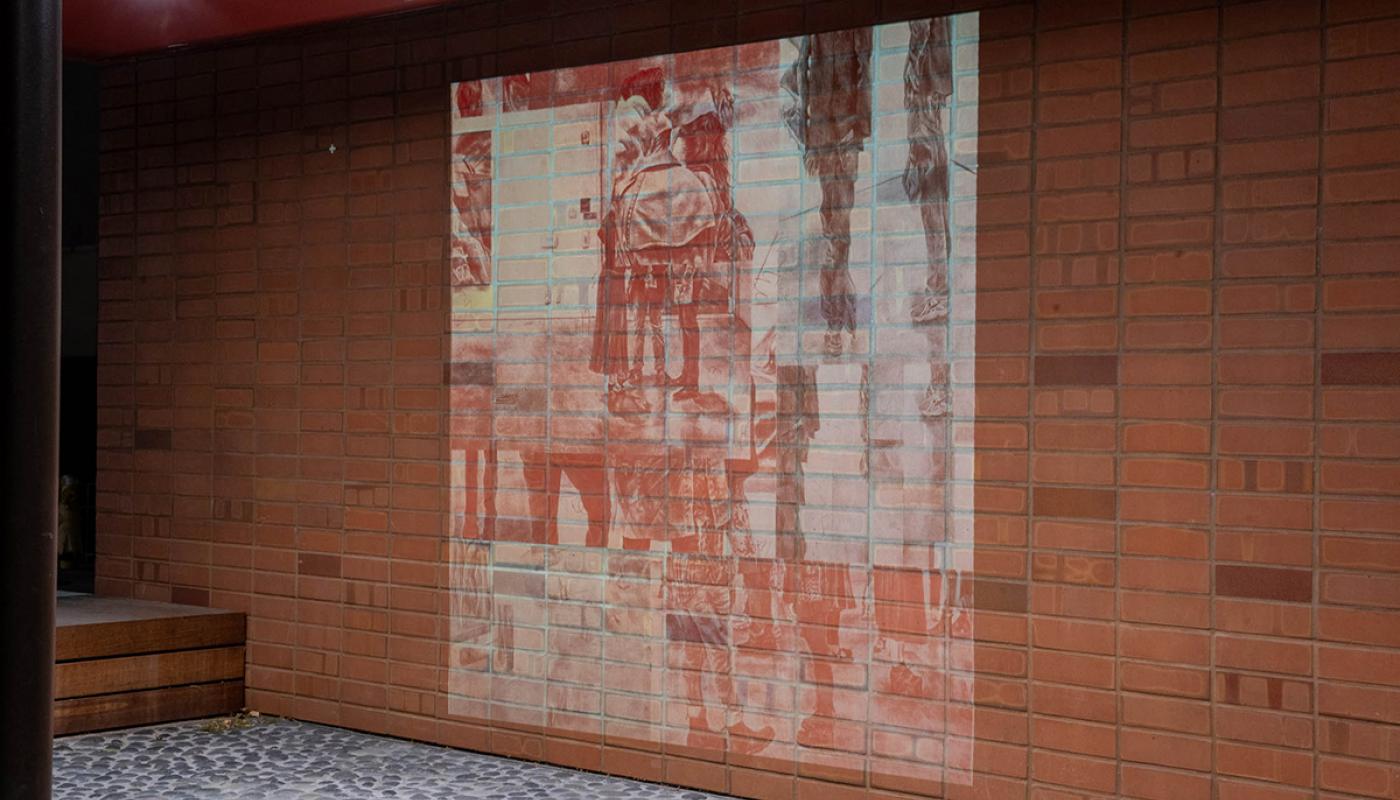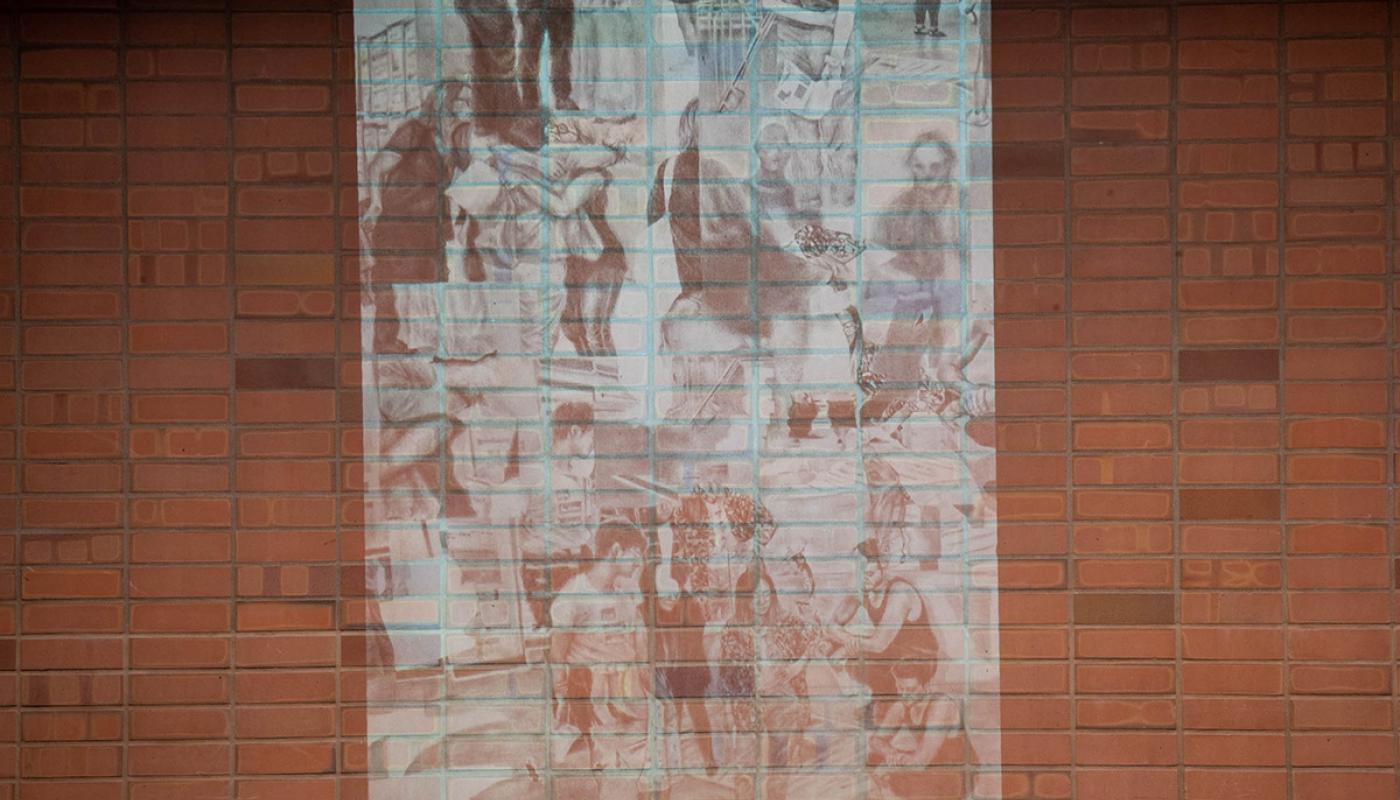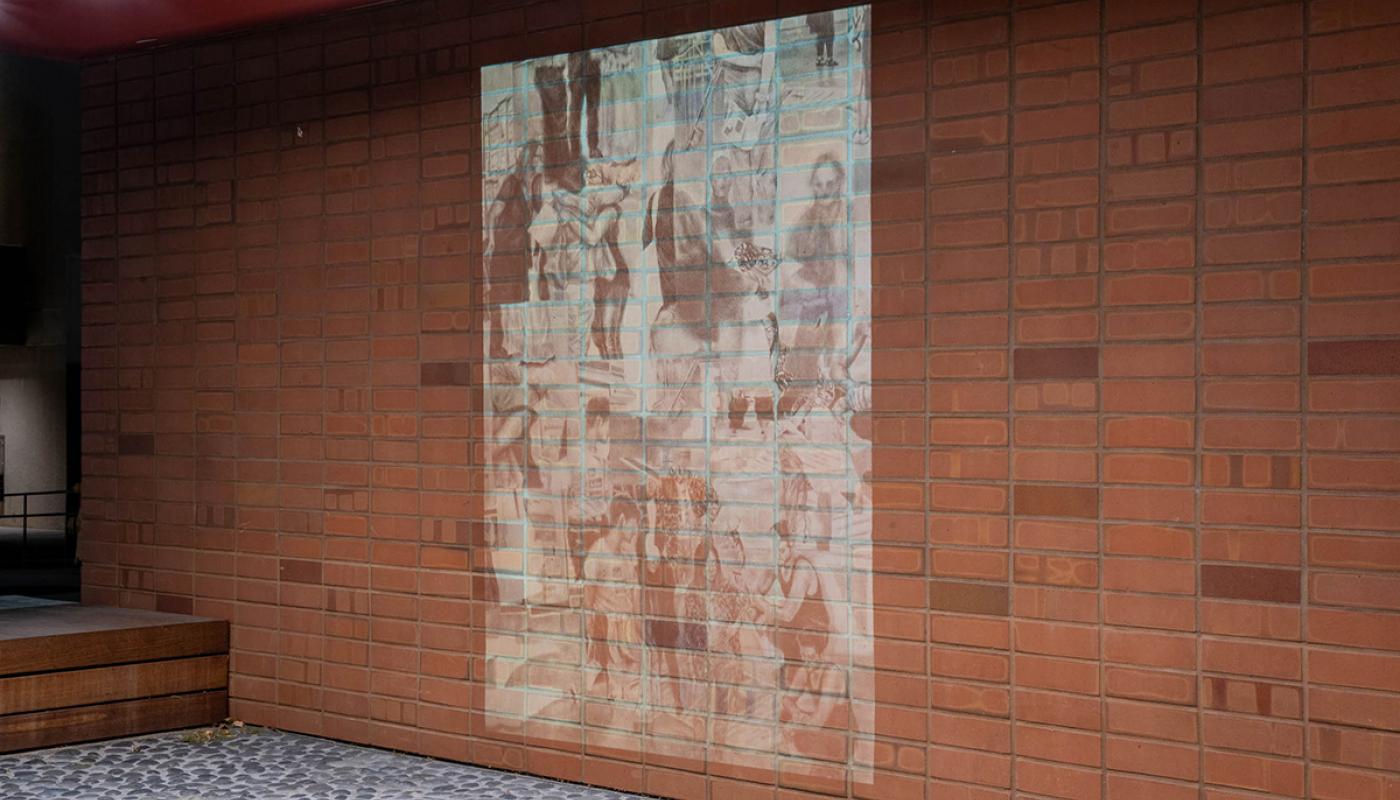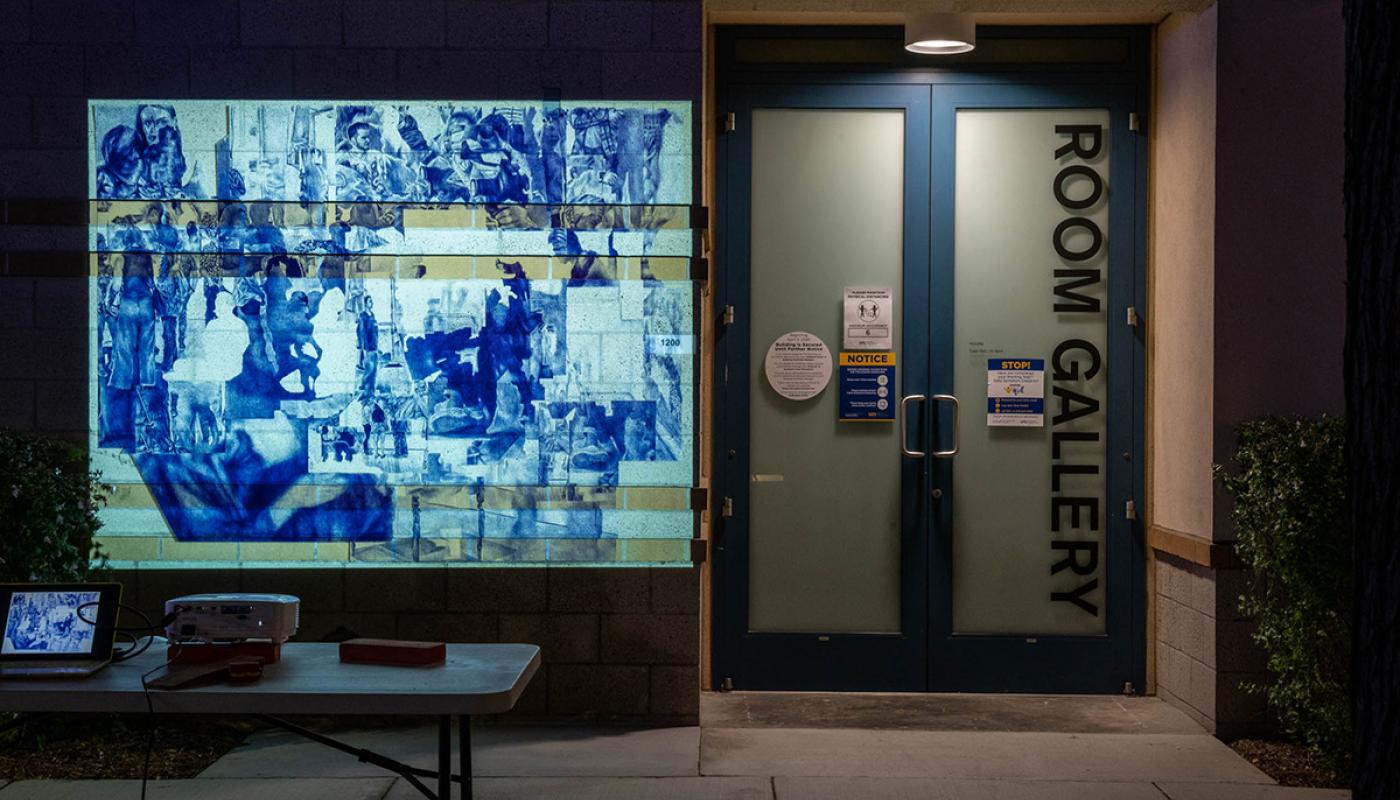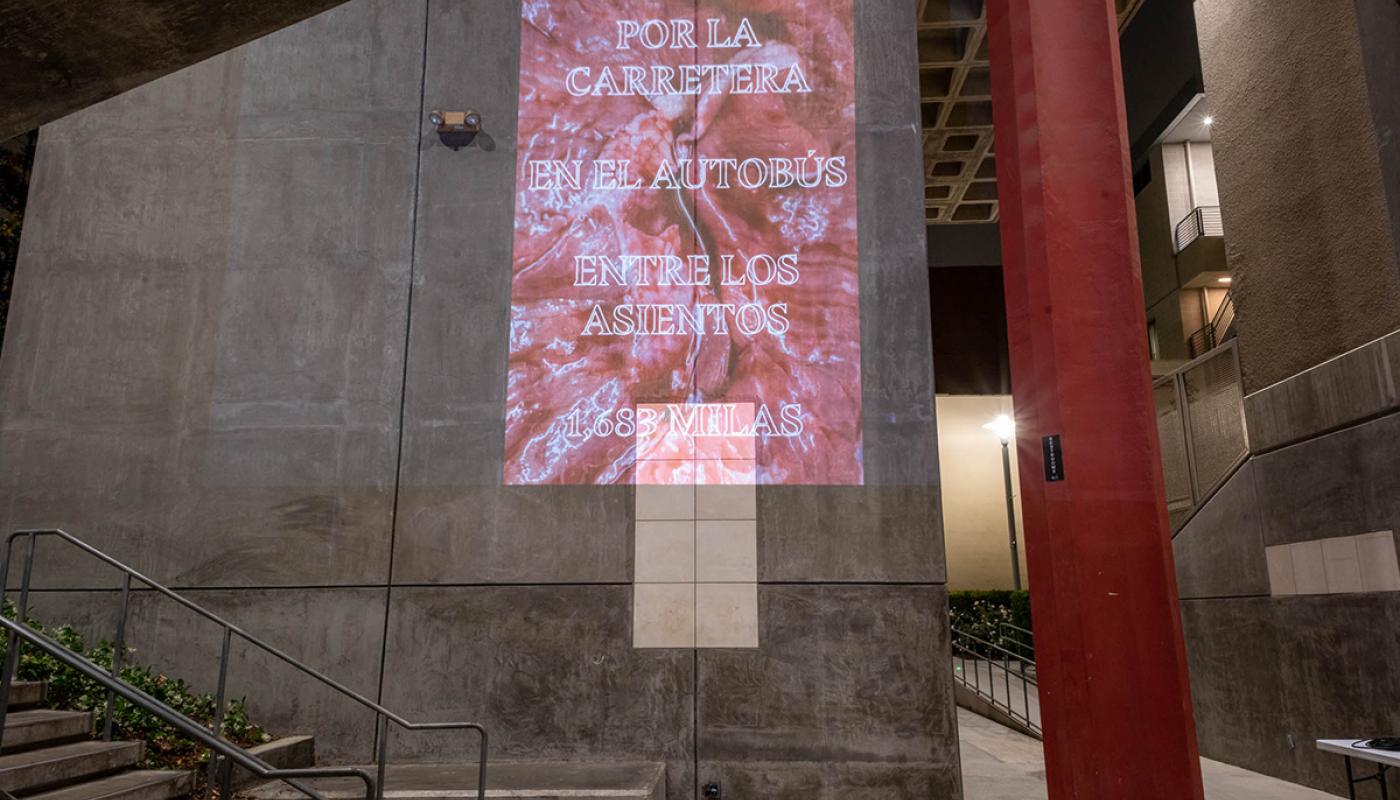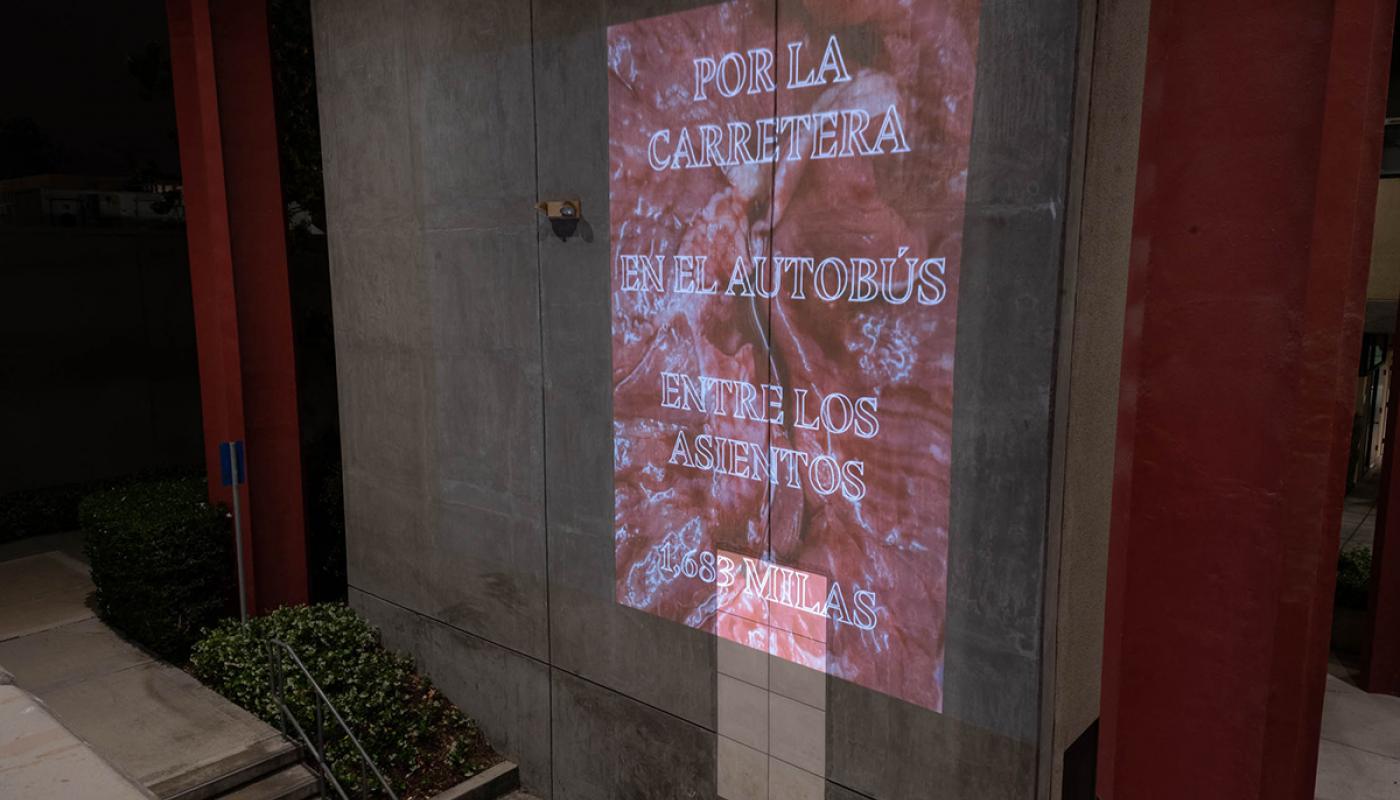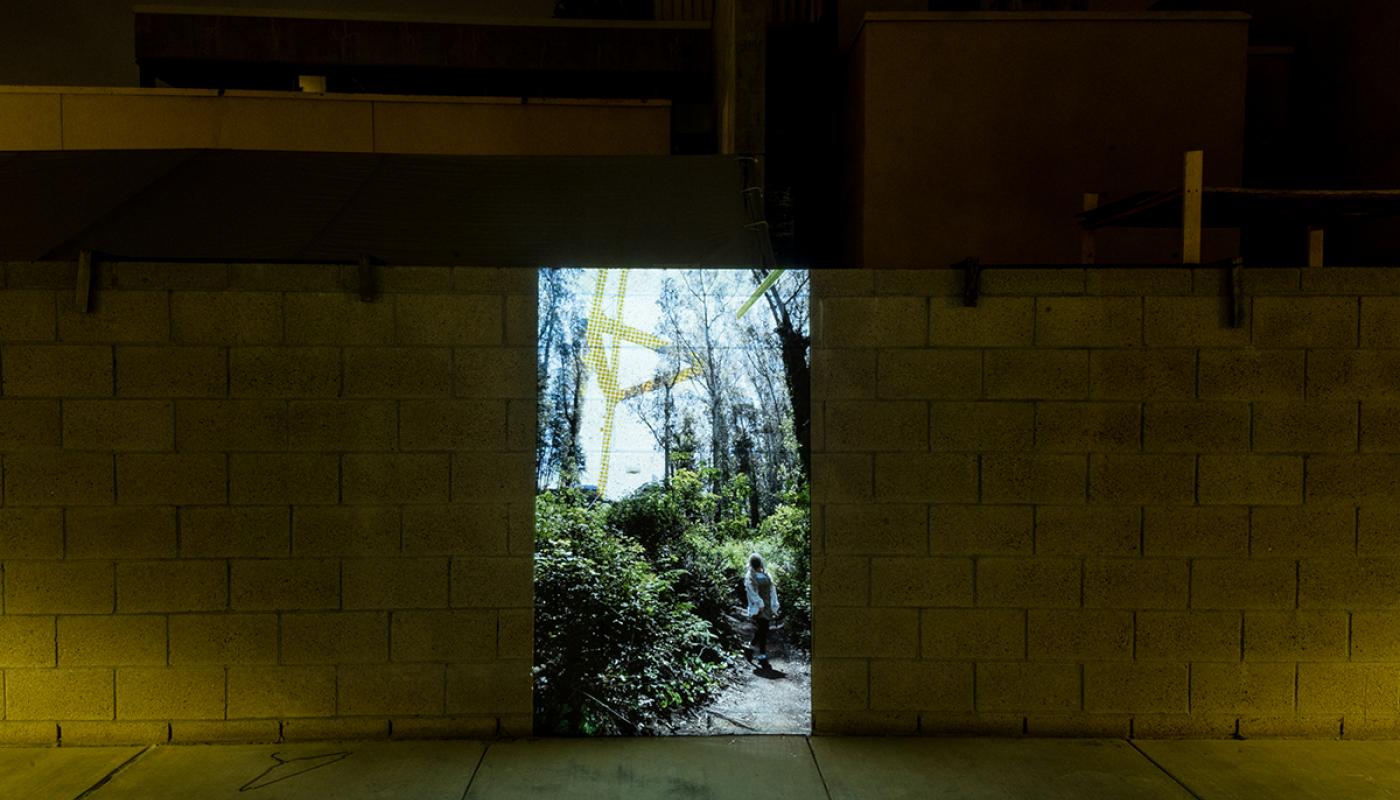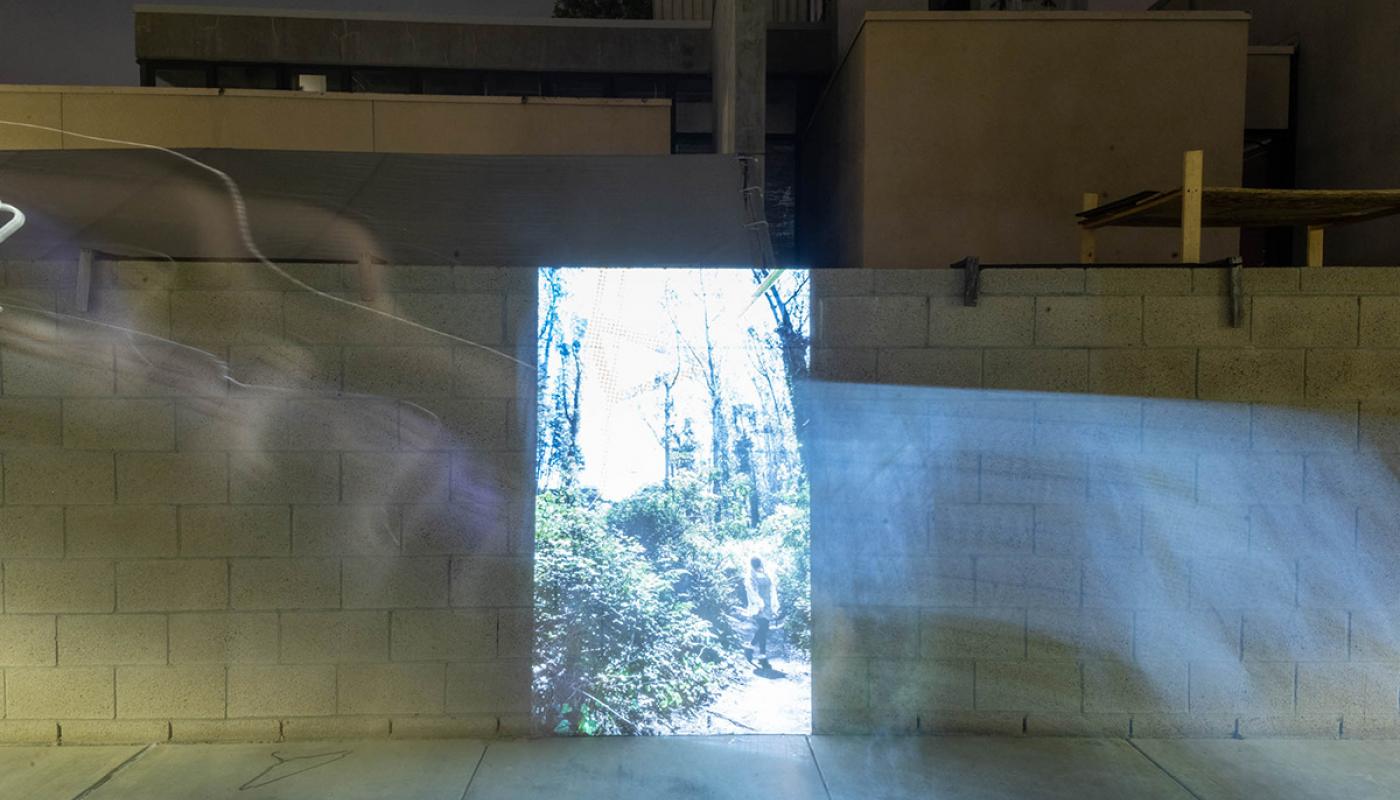Undergraduate Honors Thesis Exhibition
Mimosas After the Funeral is a multimedia undergraduate thesis exhibition presented by the 2021 honors in art cohort at the University of California, Irvine. Through the immeasurable challenges of the ongoing pandemic, the honors cohort explores longing, death, detritus, and decay through personal and historical contexts. A website presence marks the complex artistic process of working without access to on-campus studio spaces and psychologically working through the mournful historical present. An on-campus installation of projected artwork onto the vacant buildings of the Claire Trevor School of the Arts will provide a moment of commiseration and celebration to close the uncertain year. The installation will be closed to the public, but documentation will be available online. Visit the exhibition website here: https://www.uciarthonors2021.com
Esmeralda Bobadilla’s work explores identity through self-portraits and cultural reference through Mexican textiles. Her work is created through various media to illustrate the physical and spiritual layers of her identity. Since birth, she has been balancing between her Mexican identity and “American” identity as a form of survival. Through her work, she embodies this relationship through references to native plants, facial features, and other details drawn from life.
Tony (Zhaoming) Chen’s work explores human perception and multiple perspectives concerning consumption and technology. The advance of automation has accelerated the pace of human life and reduced the time for imagination to function. Chen constructs interactive and immersive environments through light and projections in his sculptural pieces. These materials are manipulated in a way to express new forms of perspective that allow the viewer to experience something that cannot be seen in the media. Chen’s works interact with the viewer and inspire new possibilities of perceiving the world.
Karen Garcia’s work explores and dissects ideas of transformation and transportation concerning immigration from Mexico to the United States. Garcia deconstructs the body into a raw state to reflect on the familial history of crossing the border; focusing on the state of the body in transport and the body as cargo. As a second-generation Mexican-American, Garcia uses cultural materials of meat, textiles, and hibiscus to reflect on this journey of transition and the intergenerational significance of immigration.
Alejandra Gonzalez’s work is heavily influenced by internet culture. The media she consumes shines through the media she outputs, which mainly revolve around social media, music, or films and videos available through streaming services. In Undo/Redo, her work centralizes the idea of reassurance during a time of uncertainty. By addressing the mundane and highlighting it in a way that shines a positive light onto the situation, she aimed to document her experience of the global pandemic in a generalized way that anyone can relate to, as a way to reassure audiences that they were not alone during their hardships. She believes that bringing awareness to the lessons learned throughout the pandemic is crucial to societal and personal development.
Peter Hoc McEldowney is a queer Vietnamese American artist who creates oil paintings. His work draws upon medical illustration, religion, and the Asian American relationship to survival. McEldowney’s thesis work focuses on teeth and dentistry as a metaphor for the Vietnamese-American immigrant community’s relationship with care and salvation.
Alexis Miranda’s work transforms the passive experience of depersonalization/derealization into an active, visceral experience that manifests through the lens. Rather than performing in person for an audience, Miranda’s work interweaves video editing into live performances. The veneer of the fabricated surreal environments and actions become dense as no matter who is viewing the work–whether it be the audience or artist–witnesses masking that simultaneously obscure and emphasize themes of dissociation and personal identity and its connection to American values and the destruction of leisure industry on city life.
Audrey Hernandez Peterson creates laborious drawings that depict the totality, subjectivity, and complexities of social experiences. Using the photographs of exhibition openings featured on the University Art Gallery’s social media, she creates digital collages on specific openings that she attended and then renders the final image. The drawing process acts as an index of the strong yet inconspicuous effect that communal social experiences have on the individual while questioning the clarity of memory.
Haley Kim works with monoprint and artist books that explore the dream, memory, landscape, and virtual space. Creating prints and making a constructed artist book in three dimensions, her works allow the audience to interact with a visual reconstruction of the artist's dream space. These images are constructed through continuous, abstract mark-making and the afterimages which recall the aesthetics of photographic film. She uses the physical space of the exhibition to construct a three-dimensional, interactive narrative embodying the space between dreaming and waking.
John Novak’s work is centered around exploring our socio-political constructions of Self, Being, and values. While John’s work centered around photography and video, his practice has expanded to include collage and painting to disrupt perceptions of ourselves and others.

